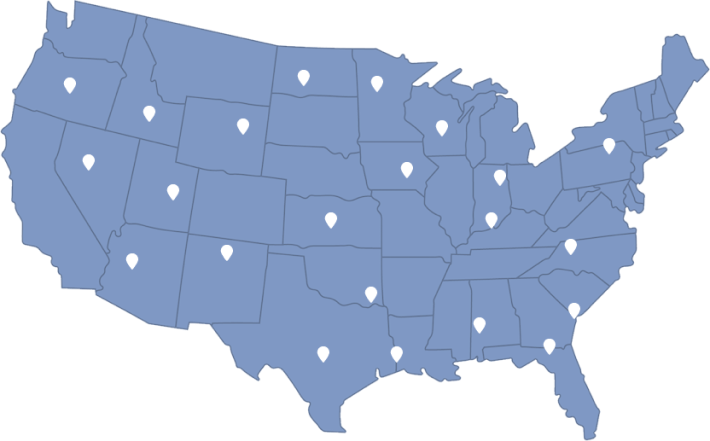Nationwide Nursing Home & Abuse Lawyers
Dedicated legal advocates protecting your loved ones nationwide. When nursing homes break their promise of care, our experienced attorneys fight for the justice your family deserves.

In a properly managed nursing home, skin infections should be rare—and if they occur, they should be caught early and treated immediately. But in facilities where residents aren’t repositioned, wounds go unnoticed, and hygiene is inconsistent, skin infections become both a symptom and a consequence of larger systemic failures.
At The Higgins Firm, we represent families across the country whose loved ones developed painful, dangerous, and sometimes fatal skin infections due to nursing home neglect. We don’t just investigate what happened. We uncover why it happened—and who’s responsible.
Skin infections occur when bacteria, fungi, or viruses penetrate the skin, often through a wound, ulcer, or break in the skin barrier. These infections are particularly dangerous for elderly residents because:
For a nursing home resident, something as minor as a scratch, skin tear, or pressure ulcer can turn into a serious infection in a matter of days—or hours—if it isn’t treated.
| Infection | Cause / Characteristics | Risk Factors |
| Cellulitis | Bacterial infection of the dermis and subcutaneous tissue, typically by Streptococcus or Staphylococcus | Occurs through open wounds, skin tears, or surgical sites |
| MRSA | Antibiotic-resistant Staph aureus infection, often associated with infected wounds or catheter sites | Difficult to treat; can become systemic if missed |
| Infected Pressure Ulcers | Bedsores that become colonized with bacteria | Caused by immobility, moisture, poor nutrition, and neglected care |
| Fungal Infections (e.g., Candida) | Thrive in moist environments like skin folds and under briefs | Often due to poor perineal care or inconsistent bathing |
| Necrotizing Fasciitis | Rare but life-threatening “flesh-eating” infection of the tissue beneath the skin | Requires immediate surgical intervention and ICU care |
These infections can result in hospitalization, amputation, permanent disability, or death—especially if they progress to sepsis, a body-wide infection that can shut down organs.
Skin infections are usually preventable when proper protocols are followed. But in our investigations, we repeatedly uncover:
These failures are rarely isolated—they point to understaffing, training gaps, or a culture of cost-cutting over care.
Certain residents are significantly more vulnerable to skin infections and require intensive prevention efforts:
Facilities must create and implement customized care plans to monitor and protect high-risk residents. When they fail to do so, infections become inevitable.
In many cases, the infection is not the first sign of neglect. It’s the last opportunity to intervene before irreversible harm occurs.
Under the Nursing Home Reform Act and CMS regulations, nursing homes must:
When facilities fail in these duties—and a resident suffers as a result—they may be held liable for negligence, wrongful death, or violations of federal law.
At The Higgins Firm, we take a multidisciplinary approach to uncover the truth:
If your loved one suffered a preventable skin infection, your family may be entitled to:
We pursue every case with the full weight of our national practice—because the harm done is never small.
You deserve more than apologies. You deserve answers, accountability, and resolution.
If your loved one developed a serious skin infection in a nursing home, and you believe it could have been prevented, we’re here to help. Don’t let the facility’s excuses go unchallenged. Let’s uncover the truth—and take the next step together.
Dedicated legal advocates protecting your loved ones nationwide. When nursing homes break their promise of care, our experienced attorneys fight for the justice your family deserves.
